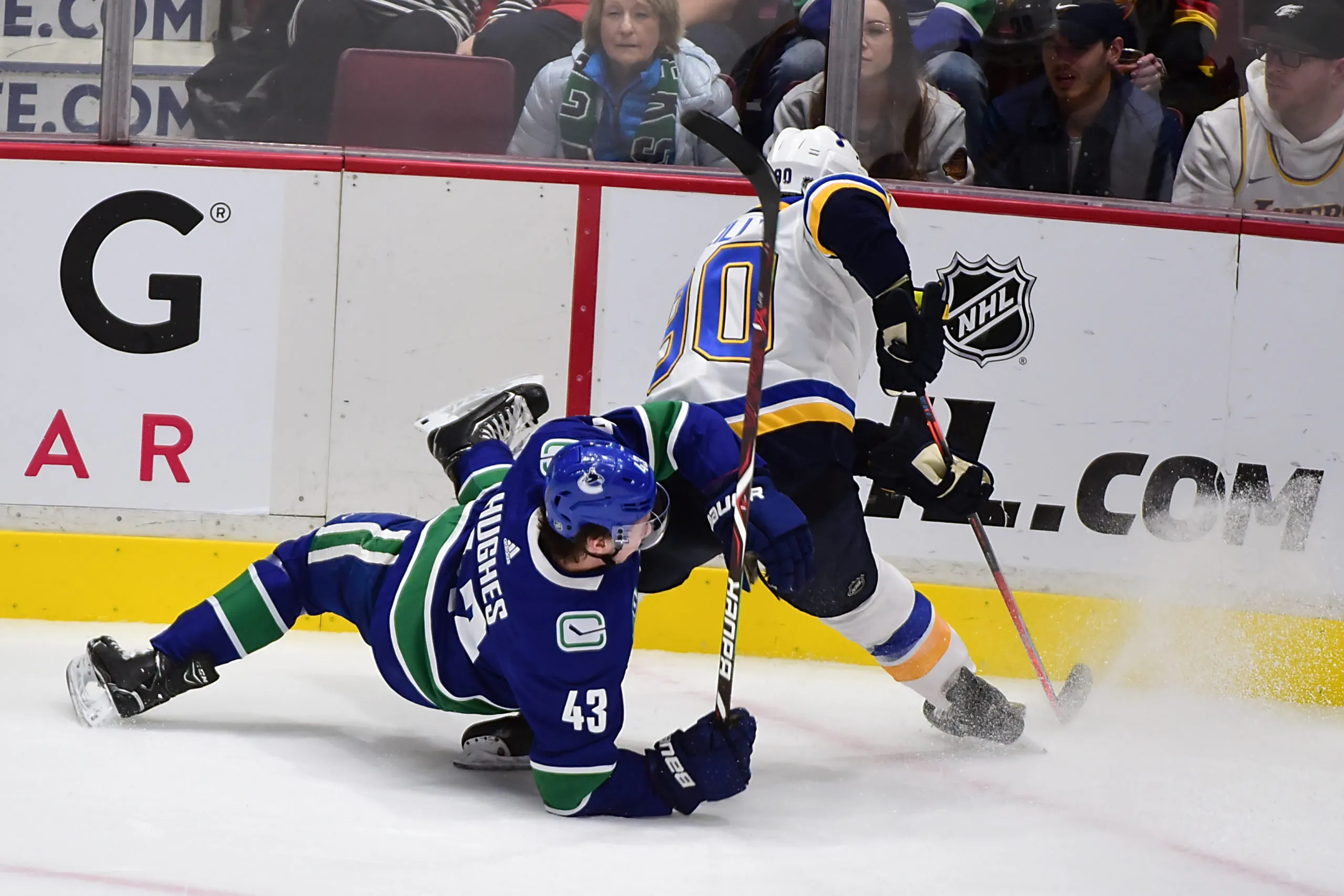The Vancouver Canucks played great against the St. Louis Blues this season, but Quinn Hughes did not.
During the season, the Canucks won two games and lost one in overtime against the Blues.
Quinn Hughes on the other hand, wasn’t his regular amazing self against St. Louis this season. He finished the season with a 52.64% share of attempted shots. That means that 52.64 out of every 100 shots were attempted by the Canucks when Hughes was on the ice.
This is good.
Hughes saw his control of attempted shots drop in the three games against the Blues this season. He controlled only 46.07% of attempted shots in the 45:40 of 5-on-5 ice time that he saw against the Blues.
This is not good.
Hughes had a tough matchup against one specific line, and that was the Ryan O’Reilly line that features David Perron and Zach Sanford as the wingers. In 14 minutes of ice time that Hughes faced off against the O’Reilly line, the Canucks only attempted seven shots while giving up 24. That’s a 22.58% control of attempted shots for Hughes.
That is bad.
A lot had changed for the Canucks and Quinn Hughes looked like a man on a mission in games two, three and four of their recent play-in series against the Minnesota Wild. I’m not worried about Hughes being bad against the Blues. He’s an elite defenceman in the NHL and this is too small of a sample size to cause fans to panic.
One of Hughes’ worst analytical games of the season did come against the Blues on January 27th. The Canucks would go on to win that game 3-1 but Hughes was bombarded in his own zone by the O’Reilly line. Here’s an example of the O’Reilly forecheck on Hughes and an overall tough shift for the rookie.
Hughes was on the ice for a goal against while facing Brayden Schenn as well. Schenn used a spin move to keep Hughes away from the puck and that led to a Vladimir Tarasenko goal.
It wasn’t all bad for Quinn Hughes against the Blues this season.
He scored his second career goal against the Blues on November 5th. It was a big goal as it tied the game up at one and pushed it to overtime.
Hughes played over 20 minutes in all three games this year against the Blues. I’d expect him to be averaging over 24 minutes a game in this series as the Canucks will rely upon his skills to move the puck out of their own zone and provide an offensive burst around Jordan Binnington.
In those three games, Hughes had five total shots on net. This will likely grow, much like his confidence has throughout the season. This team needs Hughes to be a difference-maker and that is what they are going to get.
Analytics tell one side of the story and the eye test tells the other side.
The problem is that neither can predict the future.
One thing I know for sure is that Quinn Hughes is a difference-maker. The big Blues forwards may have gotten the best of him in the regular season but just like the Canucks in game two of the Wild series, I expect Hughes to bounce back and have one heck of a series.
Don’t bet against the super rookie Quinn Hughes.


